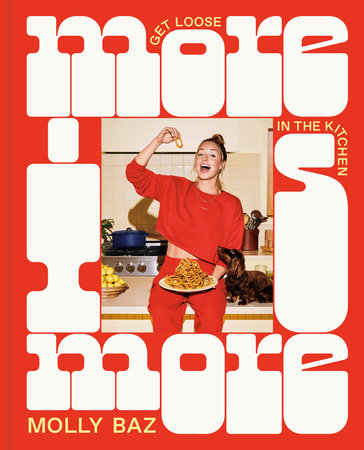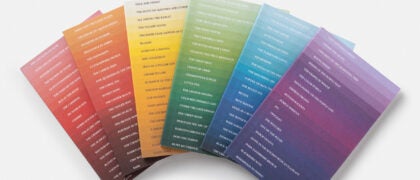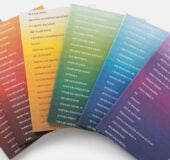Intro It was a completely insignificant Saturday in September. The year was 2021. It was 9:30 a.m. and my husband, Ben, had dragged me to a dive bar off of Sunset Boulevard to watch a *very important* English Premier League soccer match.
Don’t be fooled. This isn’t a story about sports (I have very little to say on the matter); it’s a story about calamari. . . . Cut to the top of the second half, an hour-ish or so later. It was far too early for lunch, I hadn’t had breakfast, and there was nary a pancake in sight. The menu featured all the classic bar food hits, that magnificent category of rich and delicious foods you crave when you’re at a dive—loaded nachos, Buffalo wings, potato skins, and, my personal weakness, fried calamari. I may or may not also have been two Bloody Marys deep at this point, though that is relevant to this story only insofar as to paint a picture of who I am. The game plan was clear: I was having calamari for breakfast.
Ten minutes and half a Bloody later, the calamari arrived. The diagnosis: golden brown, craggy crisp, unadorned, and served in a paper-lined red plastic basket, just as you’d expect. It looked like . . . calamari. Taste-wise, it wasn’t bad, not rancid or anything—far from it. It was simply very whatevs. Underseasoned and just kinda plain.
For most people, that’s where this story would end. They’d eat their perfectly fine breakfast squid and life would go on as it always does. Well, as I am about to make clear, I am not most people, and I happened to have some time on my hands. I took a look around me to see how I might remedy the sitch: right away I noticed a pepper grinder and a bottle of hot sauce on the table. There were lemon wedges perched on the rims of our Bloodys (I knew I’d ordered two for a reason). I always carry a tiny tin of Maldon flaky sea salt in my bag, so the seasoning element was on lock. I politely asked my server for a side of mayo and then determinedly got to work.
Within minutes, I had successfully transformed a perfectly fine and absolutely forgettable plate of fried calamari into a meal that will stick with me forever (just don’t ask me who won the match or, for that matter, who was playing).
Here’s how it went:
1. Squeeze the juice of 4 lemon wedges over the basket of calamari.
2. Season the calamari liberally with flaky sea salt.
3. Stir together a quick tableside spicy mayo for dipping by combining mayonnaise, hot sauce, a touch more lemon juice, salt, and pepper.
4. Wash down with another Bloody and enjoy one of the greatest plates of calamari of my life.
Willett (that’s Ben) sat across from me eating his breakfast burger (a very delicious one, I will add), slightly horrified and yet entirely unfazed because, of course, he’d seen this whole on-the-fly doctoring routine go down at least a thousand times before.
But it was right then, in that seemingly insignificant moment, that this book was born. Sitting in that bar, I realized that what the calamari had needed was just a little more. Suddenly, everything became clear. What sets apart a good cook from a great one, an amateur chef from a professional, a true pursuer of good food from an apathetic one, can be summarized in a single phrase: MORE IS MORE.
When it comes to cooking,
More Is More is an ideology to live by. It is a guiding principle to embrace boldness in the kitchen (or, in this case, at the table) in order to level up your food. It’s a commitment to doing anything and everything in our power to land a delicious meal. It’s about refusing to settle for something mediocre and instead figuring out how to transform that mediocrity into something stupendous. If your first reaction is to think I mean “more bacon, more salt, more cheese”—gluttonous excess is not what this book is about. It’s about finding more confidence in the kitchen, gaining more trust in our own cooking ability, and having the nerve to go for bigger, bolder, more explosive flavor.
When I was a fine-dining line cook, I spent years being drilled with the mindset that less is always more. Single dots of sauce on a plate, a whopping two-ounce portion of fish, and three perfectly placed chive batons as garnish. But then I became a home cook and realized that in my kitchen, I am in charge. I call the shots. And what I actually crave is just the opposite. I don’t know about you, but I want to cook and eat with ABANDON. We’re on this planet only once, and gustatorily speaking (it’s a word—trust me), I see no reason we shouldn’t make the most of that time. I want to cook and eat BOLD food with BIG personality, especially if I’m going to go to the trouble of making it myself. Restraint, my friends, is overrated.
So what does this all mean, practically? It means I want you to crank up the dang heat! To grab a big-ass pinch of salt! To use every part of every ingredient to its fullest potential and then some. To cook with gumption, and personality, all in the service of building confidence and boldness and taking control of your home kitchen! I’ve seen the way my friends and fam reluctantly turn their heat to medium-high when a recipe calls for it and then instinctively turn it down to medium-low for fear of burning. (We need that good browning!!) I’ve seen the way an amateur cook gingerly seasons a steak. (Nothin’ worse than a bland piece of meat!) I’ve seen all of it and then some, and through my observations I’ve deduced that a little confidence, good technique, and a better understanding of ingredients can be the difference between the forgettable and the memorable—my calamari zhoozhing being just one everyday example.
“More is more” is that moment you recognize your salad needs an extra glug of vinegar, or your roasted carrots could really use a handful of chopped peanuts for texture. It’s that first time you drizzle chili crisp on a fried egg and the stars suddenly align. It’s about trusting yourself enough to leave the chicken thighs skin-side down on the heat, undisturbed, for fifteen whole minutes, only to then enjoy the crispiest dang chicken skin of your life. It’s all the adjustments, big and small, that take your food from good to lights-out GREAT.
The recipes in this book will encourage you to break out of your comfort zone, to learn how to cook passionately, fearlessly, and, as always, in pursuit of something yumz. They’ll leave some ingredients open-ended so that you can pick your fave [insert herb here] for a salad, and quantities like generous handfuls, glugs, and pinches will be encouraged so you reach less for the tangled-up set of measuring spoons and connect more with the ones you’ve got attached to your body. To cook with a “more is more” mentality is to identify what the right amount of any given ingredient means to you, and the only way to gain that self-assuredness is to cook more—and more—and then probably a little more. Through some trial and error, and, I hope, a lil’ help from this book, you’ll soon become a cook who knows exactly when the “more” becomes “it’s perfect, let’s eat.”
Okay! Enough preaching, you get the point. It’s time to pick up your knives and clear your cutting boards. We’re MORE IS MORE people, and we’ve got cooking to do.
I promise it’s going to be f***ing delicious.
Copyright © 2023 by Molly Baz. All rights reserved. No part of this excerpt may be reproduced or reprinted without permission in writing from the publisher.

























